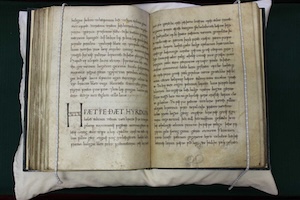The hoopoe tells the birds that to each the Simurgh they must cross seven valleys:
1. Valley of the Quest, where the Wayfarer begins by casting aside all dogma, belief, and unbelief.
2. Valley of Love, where reason is abandoned for the sake of love.
3. Valley of Knowledge, where worldly knowledge becomes utterly useless.
4. Valley of Detachment, where all desires and attachments to the world are given up. Here, what is assumed to be “reality” vanishes.
5. Valley of Unity, where the Wayfarer realizes that everything is connected and that the Beloved is beyond everything, including harmony, multiplicity, and eternity.
6. Valley of Wonderment, where, entranced by the beauty of the Beloved, the Wayfarer becomes perplexed and, steeped in awe, finds that he has never known or understood anything.
7. Valley of Poverty and Annihilation, where the self disappears into the universe and the Wayfarer becomes timeless, existing in both the past and the future.
The birds quail*, because they cannot imagine going through these valleys. Attar, of course, is trying to take his readers through the necessary stages of asceticism and purification that are the hallmarks of Sufism.
Some of the birds die of fright at the hoopoe's announcement. The rest start the journey anyway, but many don't make it due to hunger and thirst, or heat, or wild animals. Some just give up.
Finally, only 30 birds reach the Simurgh, to discover that they are the Simurgh, and that traversing the seven valleys has caused them to achieve success and become the pinnacle that they sought.
Although Attar wants the story to be entertaining, it became famous because of the symbolism that leads the reader through the stages to achieve enlightenment.
It would be difficult for a medievalist reading about this to not think about another poem in which all birds gather together, although their purpose for being together would be appalling to Attar. Next time we'll talk about Chaucer's Parliament of Fowls and the first recorded reference to a holiday that generates $10 billion in sales each year.
*Yes, that's an avian pun.





du.jpg)








